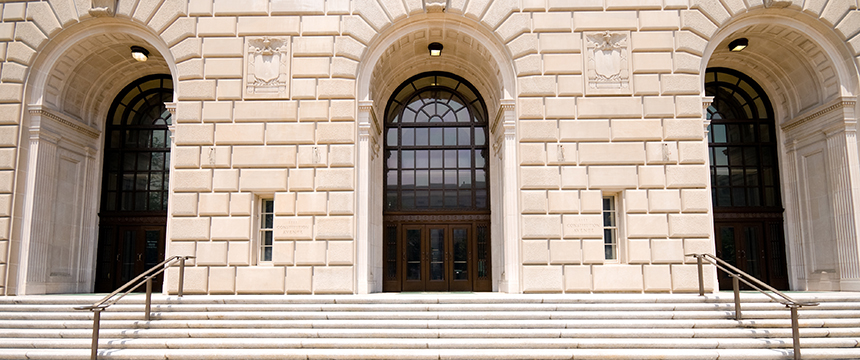IRS Issues Guidance on Employee Retention Credits Under CARES Act – Updated as of April 24, 2020

The IRS issued guidance on the Employee Retention Credits under the Coronavirus Aid, Relief, and Economic Security Act (“CARES Act”) on March 31, 2020 and the Joint Tax Committee provided additional legislative history in the form of its “blue book” analysis released on April 22, 2020. The Employee Retention Credits are fully refundable tax credits available to eligible employers equal to 50% of qualified wages paid to an employee. The IRS’s Employee Retention Credits FAQs can be found here, and the Joint Tax Committee report may be found here. Foley’s original summary of Retention Credits can be found on Foley’s CARES Act – Summary of Tax Provisions (see Section 2301 of the CARES Act).
Below is a summary of the key information from those FAQs and other related observations:
Employer Eligibility
An eligible employer is one which carries on a trade or business during calendar year 2020, but with respect to any calendar quarter, (a) experiences a full or partial suspension of the operation of its trade or business due to a governmental order as a result of COVID-19 (a “suspension”) or (b) experiences a significant decline in gross receipts (a “gross receipts decline”).
A significant decline is deemed to occur: (1) beginning with the first calendar quarter after December 31, 2019, for which gross receipts for that calendar quarter are less than 50% of the gross receipts for the same calendar quarter of the prior year and (2) ending with the last day of the calendar quarter for which gross receipts of the eligible employer are greater than 80% of the gross receipts for the same calendar quarter in the prior year. With respect to the gross receipts decline, aggregation rules apply, which will require certain affiliated employers to measure their gross receipts decline on an aggregated basis. Further, the gross receipts decline (as well as the suspension) are only evaluated for calendar quarters in 2020, as the credit is limited to qualified wages paid after March 12, 2020 and before January 1, 2021.
Under the CARES Act, a tax-exempt organization described in Code section 501(c) and exempt from tax under Code section 501(a) is an eligible employer if it is engaged in a trade or business and undergoes a suspension (but not a gross receipts decline). Note, however, that the IRS FAQ implies that a tax-exempt organization may also be an eligible employer if it experiences a gross receipts decline. The IRS has yet to address this discrepancy.
The FAQ provides important clarifying language about a suspension:
The operation of a trade or business may be partially suspended if an appropriate governmental authority imposes restrictions upon the business operations by limiting commerce, travel, or group meetings (for commercial, social, religious, or other purposes) due to COVID-19 such that the operation can still continue to operate but not at its normal capacity (emphasis added).
The FAQs provide examples for what conditions might make an employer eligible for the credit. First, a restaurant or bar, for example, would be eligible for the credit under part (a) above if a state governor issues an executive order closing the restaurant or bar but allows it to continue sales through carry-out, drive-through, or delivery basis, which the IRS categorizes as a “partial suspension.”
Second, an employer would be eligible for a credit in the first and second calendar quarters of 2020 under the “significant decline” element in part (b) above, if their gross receipts were $210,000, $230,000, and $250,000 in the first three calendar quarters of 2019 but declined to $100,000, $190,000, and $230,000 in the first three calendar quarters of 2020, respectively (i.e., 2020’s Q1, Q2, and Q3’s gross receipts were 48%, 83%, and 92% of 2019’s Q1, Q2, and Q3 gross receipts, respectively). From a practical perspective, this means most businesses will only have a significant decline starting in Q2 and will automatically qualify for one additional quarter. Few will qualify in Q1 as most businesses had normal operations for a majority of the calendar quarter.
Maximum Credit
An eligible employer is entitled to a maximum credit of $5,000 per employee; this is because the maximum amount of qualified wages that may be taken into account is $10,000 (i.e., a 50% credit on $10,000 of wages is a $5,000 credit). Many mistakenly believe the limitation applies for each quarter. Rather, the credit is limited to $5,000 for the duration of the program. For example, if an eligible employer pays $10,000 in qualified wages to an employee in Q2 of 2020, the maximum Employee Retention Credit for that particular employee is $5,000. Further, if an eligible employer pays a different employee $8,000 in qualified wages in Q2 of 2020 and $8,000 in Q3 of 2020, the eligible employer is entitled to a $4,000 credit in Q2 of 2020, but only $1,000 in Q3 of 2020.
Qualified Wages
The IRS clarifies that what constitutes “qualified wages” depends on the number of full-time employees of the eligible employer during 2019. When determining the number of full-time employees of an eligible employer, the employer aggregation rules and full-time employee definition of the Affordable Care Act apply (Code section 4980H).
More than 100 full-time Employees: If the employer had over 100 full-time employees in 2019, then the only wages qualified are those paid to an employee for the time the employee is not providing services due to (1) a full or partial suspension due to a governmental order as a result of COVID-19 or (2) a significant decline in gross receipts (as outlined above). Such qualified wages for these bigger employers may not exceed what the employee would have been paid “for working an equivalent duration during the 30 days immediately preceding the period of economic hardship.” The example discussed above provides some insight as to the causal link between the reason the employee is not working and the suspension or gross receipts decline. However, employers in essential businesses may reflect upon the strength and degree of separation between the government order causing a suspension and the reasons the employee is not continuing to perform services.
The Joint Tax Committee report provides several examples, among them:
For example, if a restaurant that had an average of 150 full-time employees during 2019 meets the governmental order test, and the restaurant continues to pay kitchen employees’ wages as if they were working 40 hours per week but only requires them to work 15 hours per week, the wages paid to the kitchen employees for the 25 hours per week with respect to which the kitchen employees are not providing services are qualified wages. However, if the same restaurant reduces kitchen employees’ working hours from 40 hours per week to 15 hours per week and only pays wages for 15 hours per week, no wages paid to the kitchen employees are qualified wages. As another example, if an accounting firm that had an average of 500 full-time employees during 2019 meets the governmental order test, and during the period in which the governmental order is in place the accounting firm closes its office and does not require custodial and mail room employees to work but continues to pay them their full salaries, wages paid to those custodial and mail room employees for the time they do not work are qualified wages. Similarly, if the accounting firm continues to pay administrative assistants their full salaries but only requires them to work two days per week on a rotating schedule reflecting reduced demand for assistance resulting from the office closure, the portion of an administrative assistant’s salary attributable to days not worked are qualified wages.
While helpful, the examples do not go into the nuance that may apply to the situations many employers have.
Finally, although not stated in IRS guidance, employers with over 100 employees in 2019 that qualify due to a suspension should consider contemporaneously documenting the connection between employees who are paid for not providing services and the employer’s reason for eligibility. Employers with a significant decline in gross receipts may consider doing so, but the overall circumstances may be more readily apparent. During an audit of the claimed credits, an employer that has contemporaneously documented its qualified wages (even with a brief internal summary of the employer’s determination as to why such wages are qualified wages) should have a stronger case for defending its position than an employer without such documentation.
100 or Fewer Employees: For eligible employers that had 100 or less full-time employees in 2019, all wages paid to any employee during the period of the suspension or gross receipts decline are considered qualified wages, even if the employees continue to provide services.
Qualified wages are limited to wages taken into account for FICA tax purposes, as well as certain qualified health plan expenses allocable to those wages. Only qualified wages paid after March 12, 2020, and before January 1, 2021 are eligible for the credit (and those wages must also be paid within a quarter for which the credit is available).
Tax credits may be claimed for both the paid leave provided under the Families First Coronavirus Response Act (the “FFCRA”) and the Employee Retention provisions of the CARES Act—just not for the same wages.
Claiming the Employee Retention Credit
Unlike the qualified leave provisions of the FFCRA, nothing in the CARES Act requires the employer to pay compensation to its employees. The payment of wages remains voluntary (under the CARES Act). For that matter, otherwise eligible employers cannot claim both the Employee Retention Credit and the Small Business Interruption Loan under the Paycheck Protection Program under the CARES Act, thus requiring employers to decide which program to invoke. Likewise, there is no “double dip” of credits for qualified leave under the FFCRA or with other employment tax credits provided under Code section 45S.
Eligible employers are allowed to apply the credit against any federal employment taxes due in connection with the payment of payroll. That is, the employer may retain the amount of the credit from federal taxes that would otherwise be due (as opposed to depositing them). The federal payroll taxes that the credit may be applied against include the employer’s portion of social security and Medicare taxes, the employee’s portion of any FICA and Medicare taxes withheld, and federal income tax withholding on wages paid to employees. In each case, such amounts include any payments to any employees. Employers will be required to report the total qualified leave wages and the related credits on their federal employment tax returns, usually Form 941 (Employer’s Quarterly Federal Tax Return). The IRS indicated Form 941 will be revised for Q2 filings to report the applicable amounts, and will provide further guidance on the reporting of the credit with respect to Q1.
To the extent the amount of the credit exceeds the amount of federal employment-related taxes due, the employer may carry forward the excess credit to future periods, or apply for an advance from the IRS by filing the newly created Form 7200 (Advance Payment of Employer Credits Due to COVID-19). The IRS has indicated such advances will be handled in a manner similar to filing so-called “quickie” refunds of net operating losses. Historically, the IRS processed such returns with minimal validation before sending refunds, and instead verified with after-the-fact audits. The IRS provided a relaxation of rules requiring ink-signed originals of tax forms for this purpose, and permits (and recommends) the filing of Form 7200 via fax (855-248-0552) to ensure prompt processing.
The IRS provided this useful example:
An Eligible Employer paid $10,000 in qualified wages (including qualified health plan expenses) and is therefore entitled to a $5,000 credit, and is otherwise required to deposit $8,000 in federal employment taxes, including taxes withheld from all of its employees, for wage payments made during the same quarter as the $10,000 in qualified wages. The Eligible Employer has no paid sick or family leave credits under the FFCRA. The Eligible Employer may keep up to $5,000 of the $8,000 of taxes the Eligible Employer was going to deposit, and it will not owe a penalty for keeping the $5,000. The Eligible Employer is required to deposit only the remaining $3,000 on its required deposit date. The Eligible Employer will later account for the $5,000 it retained when it files Form 941, Employer’s Quarterly Federal Tax Return, for the quarter.
For more information on the CARES Act as a whole, Foley’s summary of the CARES Act is available here. For more information about recommended steps, please contact your Foley relationship partner. For additional web-based resources available to assist you in monitoring the spread of the coronavirus on a global basis, you may wish to visit the CDC and the World Health Organization.
Foley has created a multi-disciplinary and multi-jurisdictional team, which has prepared a wealth of topical client resources and is prepared to help our clients meet the legal and business challenges that the coronavirus outbreak is creating for stakeholders across a range of industries. Click here for Foley’s Coronavirus Resource Center to stay apprised of relevant developments, insights and resources to support your business during this challenging time. To receive this content directly in your inbox, click here and submit the form.



